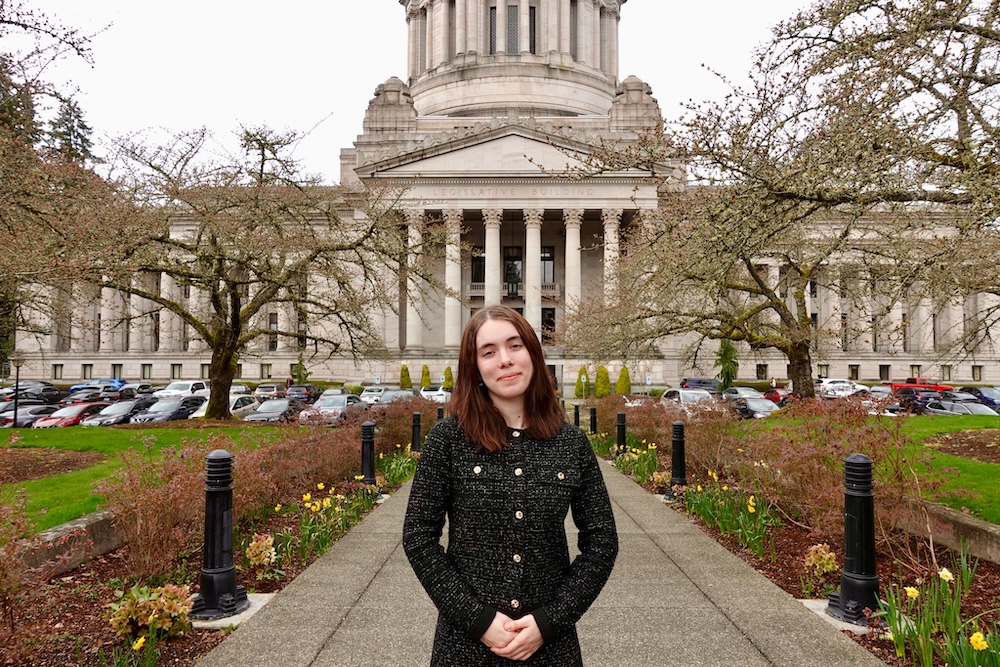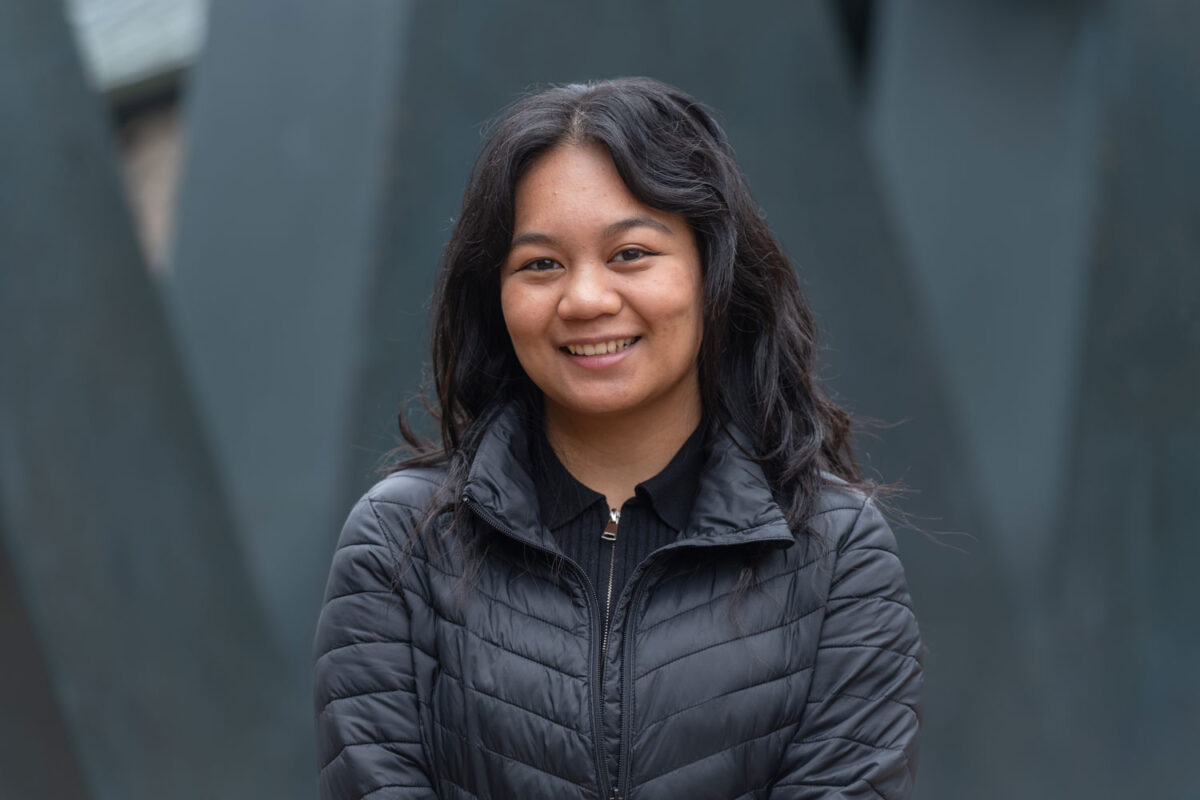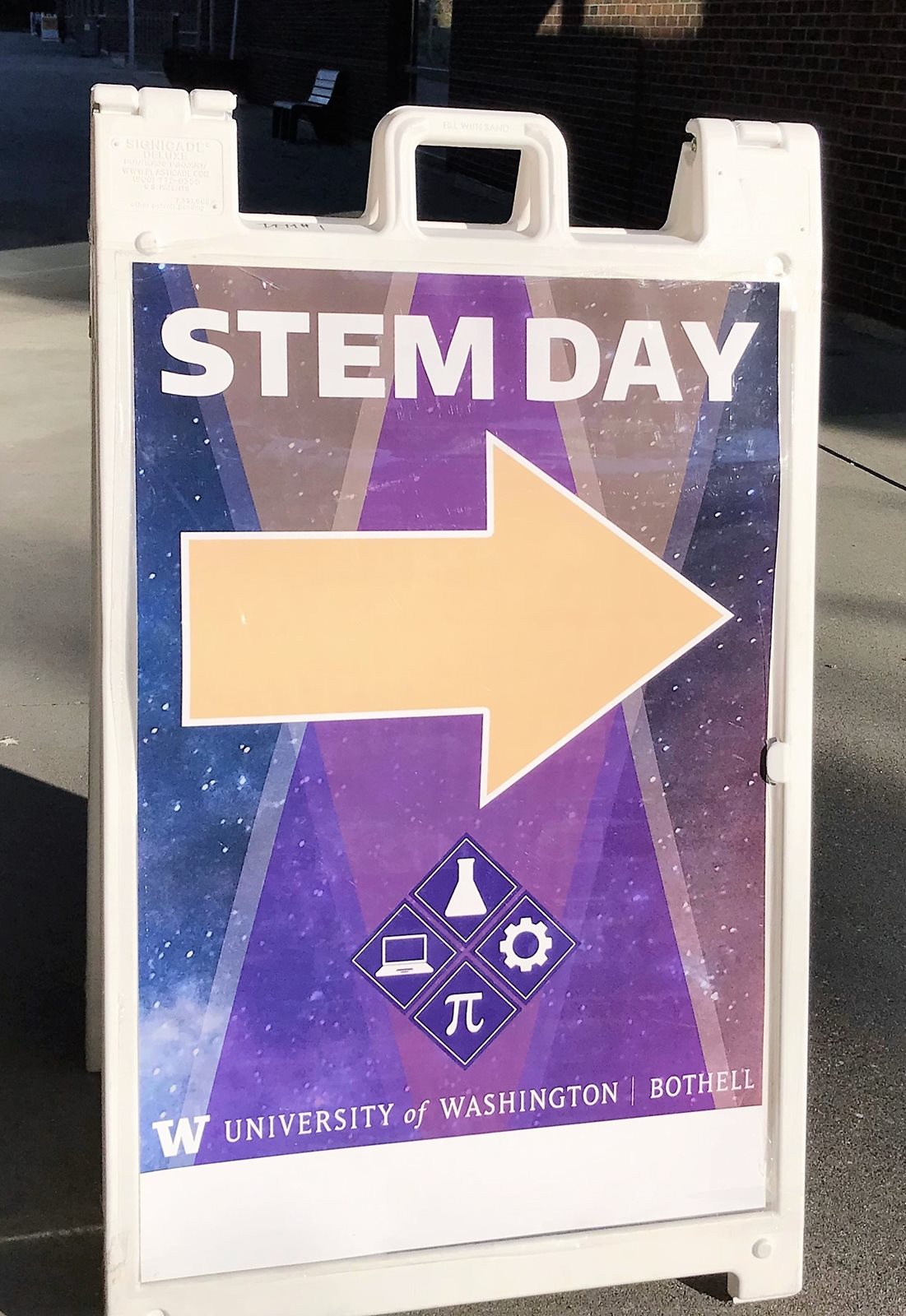
By Douglas Esser
Ivana Hayes is a second-year student at Tacoma Community College interested in biochemistry. Austin Finke is a first-year student at Cascadia College interested in computer science.
They were among more than 100 community college students who attended the second annual STEM Day on March 2 at the University of Washington Bothell to learn about possibly transferring into its School of Science, Technology, Engineering & Mathematics.
There aren’t a lot of schools that dedicate programs like STEM Day to prospective transfer students, said James Miller, director of admissions.
Academics in action
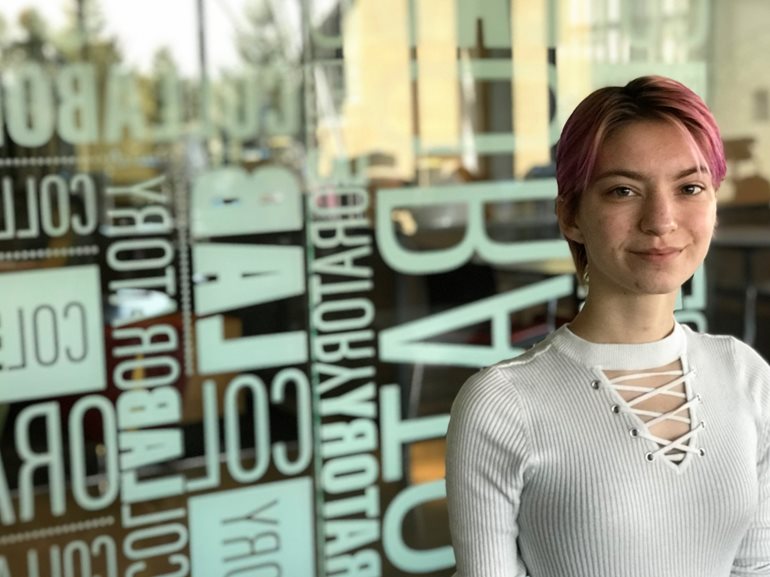
STEM Day at UW Bothell was designed to show what it’s like to be a STEM student at this campus.
“We really wanted an ‘open house’ type program, focused on the way transfer students want to interact with the college, which is through the academic programs,” Miller said.
The visiting students spent time in mock classes with professors and toured the campus to get a closer look at scientific labs and the MakerSpace workshop in Discovery Hall. Instead of just hearing what it’s like to be enrolled in electrical engineering, for example, students could actually hear Arnie Berger, associate professor, talk about how Aristotle’s fundamental principles of logic evolved to form the computer-driven world.
Other faculty who took part included Erika Parsons, computer science senior lecturer; Subramanian Ramachandran, physical sciences lecturer; Arnie Lund, professor of practice in interactive media design; Heather Galindo, lecturer in biology; and Pietro Paparella, assistant professor in mathematics.
Admissions advisers also conducted information sessions on the four STEM divisions: Biological Sciences; Computing & Software Systems; Engineering & Mathematics; and Physical Sciences.
Boundless futures
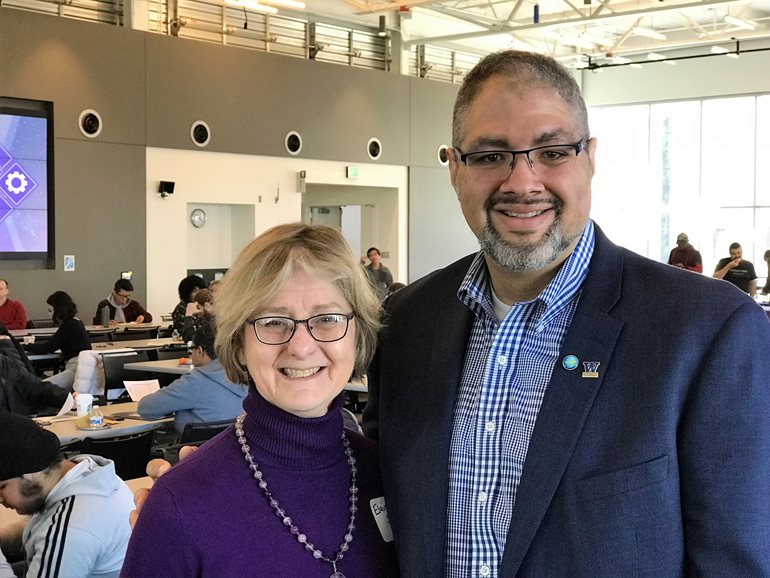
In her opening remarks, STEM Dean Elaine Scott said in less than six years, the school has tripled its number of students. STEM is the largest school at UW Bothell with about 1,300 students, or a quarter of the student body. Academic programs include undergraduate research and many opportunities to engage with capstones and other community-based learning projects, Scott said.
In his keynote speech, Ian Heisser, a director of technology within financial services at Expedia, challenged anyone to think of a field that was not influenced by STEM. Someone suggested acting, but Heisser pointed out the amount of technology in Marvel movies and even stage productions, such as The Lion King.
“The future of STEM is boundless,” said Heisser, who also is a member of the school’s advisory board.
Current UW Bothell student Ian Smith attended the first STEM Day last year, transferred from North Seattle College and is now a junior in Electrical Engineering. Smith said he received good information and helpful advising at the event. He also chose UW Bothell for its smaller class sizes and opportunities to talk with professors.
His advice to incoming STEM majors? Don’t wait until the last minute to register for courses.
Ready to go
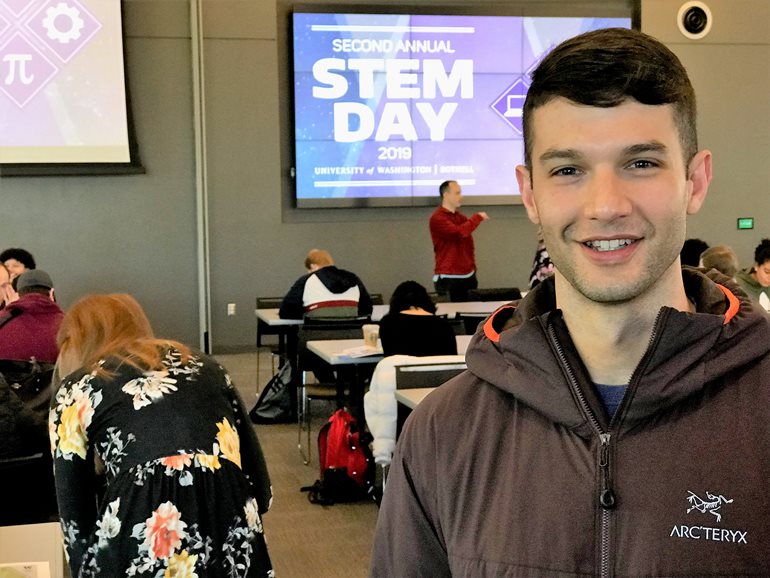
Hayes, the Tacoma Community College student, has already had some research experience but wants more. She is especially interested in using nanotechnology to create prosthetics that connect with the brain. The University of Washington is her “dream school,” and she says likes the Bothell campus.
Coming from Cascadia College — which shares a campus with UW Bothell — Finke is somewhat familiar with the university but welcomed STEM Day as a chance to get a better feeling for the student experience. After serving 10 years in the Marines with two tours of Afghanistan, Finke is making a big transition. He believes computer science is one of the best ways to make an impact, with opportunities for a career and growth.
STEM Day, he said, was well run. “Look around. These people are ready to go, and they’re excited about putting this on for all the people that are here.
“The impression I have of UW Bothell is: what an organization.”

